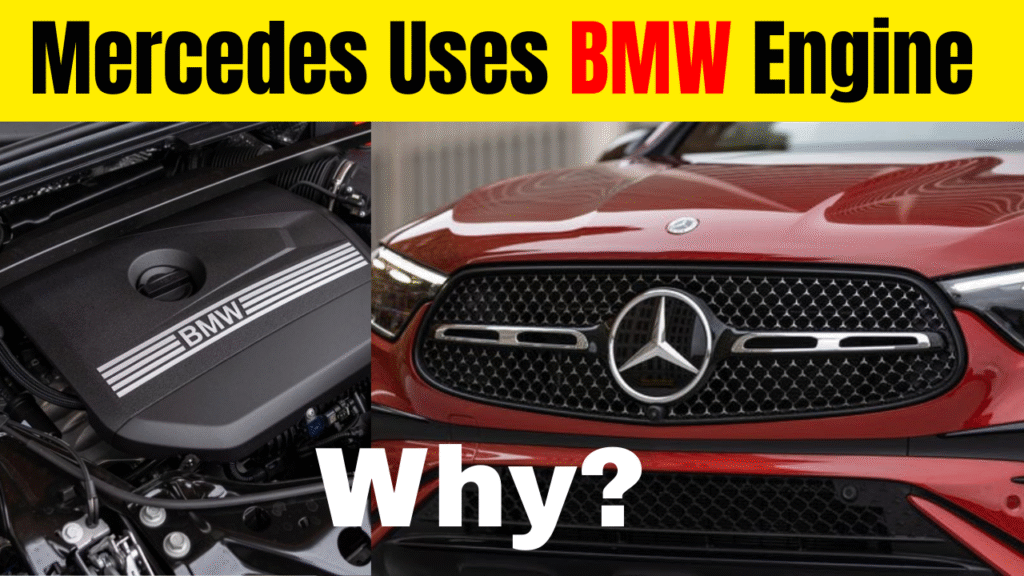Many car enthusiasts are shocked when they hear that Mercedes-Benz is using a BMW 2.0L four-cylinder engine in certain models. At first glance, this might seem unusual—after all, these two German brands are long-time rivals. But from a technical and business perspective, this strategy is not only logical, it may be the blueprint for the future of the automotive industry.
Why Mercedes-Benz Uses a BMW Engine
Developing a brand-new internal combustion engine in 2025 is incredibly expensive and time-consuming. Meeting stringent Euro 7 emissions standards, integrating hybrid technologies, and optimizing thermal efficiency require billions of euros in R&D investment and several years of engineering work. For automakers under pressure to electrify their lineups, those resources could be better spent elsewhere.
By sourcing an already efficient and compliant BMW engine, Mercedes:
- Reduces costs by avoiding duplicate R&D.
- Accelerates time to market with proven technology.
- Shares risk in meeting increasingly strict emissions regulations.
- Redirects engineering effort into the future of mobility—EVs, digital platforms, and customer experience.
Also Read: JSW Motors Ltd is moving fast to enter the car market
Lessons from Chinese Carmakers
Chinese automakers have been following this model successfully for years. They share platforms across multiple brands, centralize supply chains for engines, batteries, and ECUs, and focus differentiation on software, connectivity, and user experience. This strategy allows them to launch competitive products faster and at lower cost, while still meeting regulatory requirements.
The Real Debate for European OEMs
Instead of questioning why Mercedes would use a BMW engine, the real discussion should be:
- How can European automakers collaborate more effectively?
- How can they avoid duplicating R&D on combustion engines that are nearing the end of their lifecycle?
- How can they focus investment on electrification, digitalization, and customer value, the true battlegrounds of the future?
The fact that Mercedes uses a BMW engine is not a sign of weakness—it’s a sign of smart resource allocation in an industry undergoing massive transformation. In a world moving toward electric mobility and connected cars, collaboration on legacy technology makes perfect sense. The winners will be those who innovate where it truly matters.
Here are a couple of real-examples from India of OEMs collaborating—some of which echo the idea of “sharing engines/platforms/tech” similar to Mercedes using a BMW engine:
In India, one “lighter” example is Volkswagen & Mahindra. They signed a partnering agreement to use VW’s MEB electric components (such as electric motors, battery system parts & battery cells) in Mahindra’s upcoming Born Electric Platform. This kind of sharing allows Mahindra to avoid building every piece from scratch, particularly those EV powertrain components, and tap into VW’s proven tech to enter the EV market more efficiently.
Another example is the Tata-BMW JV for software development. BMW and Tata Technologies have formed a joint venture (50-50) in India to work on automotive software — things like dashboard systems, automated driving features, etc. While this is not engine sharing, it is sharing of high value components (software, electronic/development work) which are becoming as critical (or nearly as critical) as mechanical components in modern vehicles.
Also related is Tata Motors’ acquisition of Ford India’s Sanand plant. Tata Passenger Electric Mobility Ltd (TPEML) took over Ford’s Sanand vehicle assembly plant (land, machinery, buildings) and then retooled it for manufacturing multiple Tata & future EV/ICE models. As part of this deal, Ford continued to operate the powertrain (engine) manufacturing facility via a lease-back arrangement. That means the facility’s engine/manufacturing capability is shared (or at least co-existing) under the new ownership structure. So this is a borderline case of “engine resource sharing / facility sharing”.
These Indian examples show that component / platform / facility sharing (or joint ventures for software/EV parts) are happening, although sharing of brand-defining engines between traditional rivals (like BMW & Mercedes) is still rare..
Also Read: Honda Motorcycle & Scooter India Invests in First EV Two-Wheeler Plant in Karnataka

